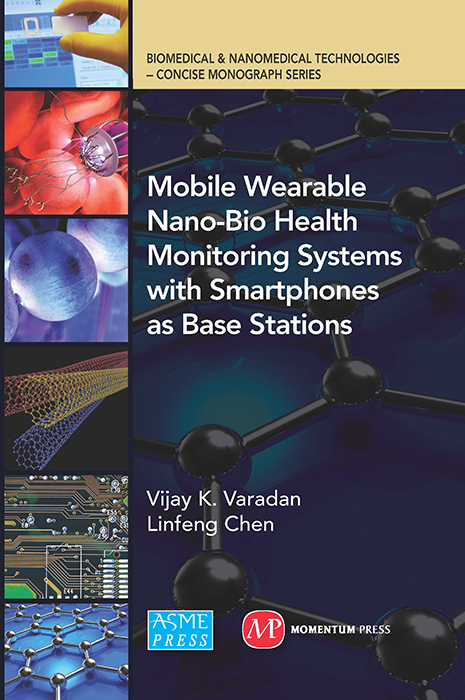
FAYETTEVILLE, Ark. – A new book by Vijay Varadan, Distinguished Professor of electrical engineering at the University of Arkansas and U of A research scientist Linfeng Chen, discusses the development and application of mobile, wireless health-monitoring systems. The book, published by The American Society of Mechanical Engineers, covers the history and evolution of textile-based sensors, health monitoring systems and the use of smart phones and other mobile devices for health care applications.
In these mobile systems, nanomaterials-based biosensors are used to measure physiological signals, such as electrocardiogram (ECG), electroencephalogram, electromyogram and electrooculogram. The physiological signals are filtered, amplified and transmitted to a remote storage server, using smart phones as the base stations. The system uses cloud-computing resources for complex computations, such as feature extraction and automatic diagnosis. The information, stored in remote servers, can be instantly accessed by health care providers or the user, and medical advice can be sent to patients through the wireless communication system.
In recent years Varadan and his research colleagues at the University of Arkansas have focused on developing textiles embedded with nanostructured sensors that gather health information and use smart phones to communicate the information to computers and other devices. Earlier this year, the researchers announced that they had developed a wireless health-monitoring system integrated into a conventional sports bra for women and a shirt for men. The system gathers physiological information, regardless of location, and communicates that information in real time to a physician, hospital or the patient. In addition to the sensors woven into the garment, the system includes a lightweight and wireless module that snaps onto the garment and communicates with software that relies on a smart phone to collect information, compress it and send it over a variety of wireless networks.
The system monitors blood pressure, body temperature, respiratory rate, oxygen consumption, some neural activity and all the readings provided by a conventional ECG, including the ability to display inverted T waves, which indicate the onset of cardiac arrest. The system does not require a cuff or any extra accessories to measure blood pressure and could therefore replace conventional blood-pressure monitors. It could also replace the cumbersome combination of ECG sensors and wires attached to patients while they walk on treadmills.
Varadan holds the College of Engineering’s Twenty-First Century Endowed Chair in Nano- and Bio-Technologies and Medicine and the college’s Chair in Microelectronics and High Density Electronics. He is director of the High Density Electronics Center and the Center for Wireless Nano-, Bio- and Info-Tech Sensors and Systems, which is funded by the National Science Foundation.
Contacts
Vijay Varadan, distinguished professor, electrical engineering
College of Engineering
479-575-2873, vjvesm@uark.edu
Matt McGowan, science and research communications officer
University Relations
479-575-4246,
dmcgowa@uark.edu